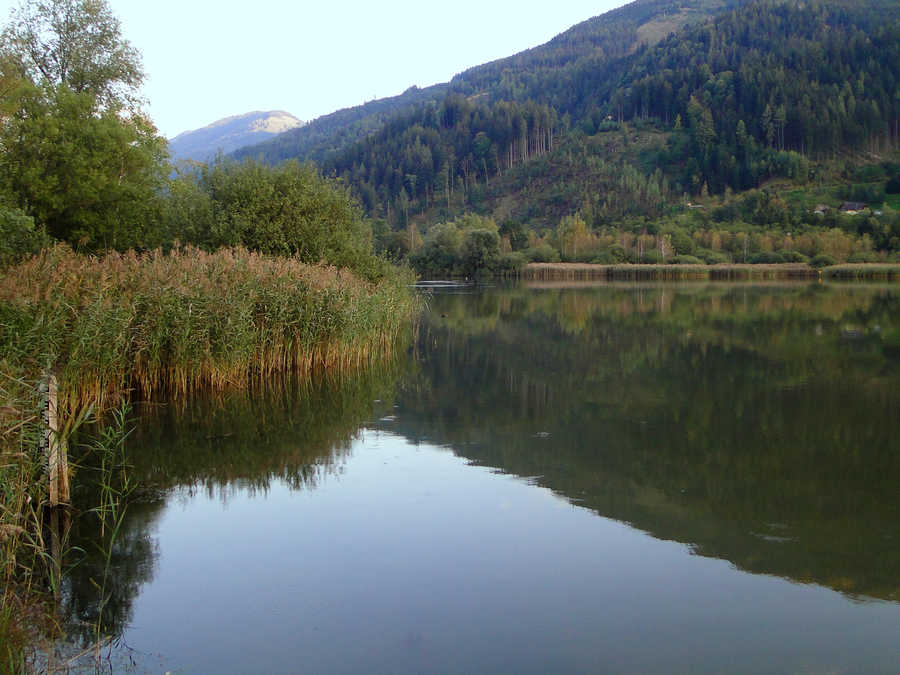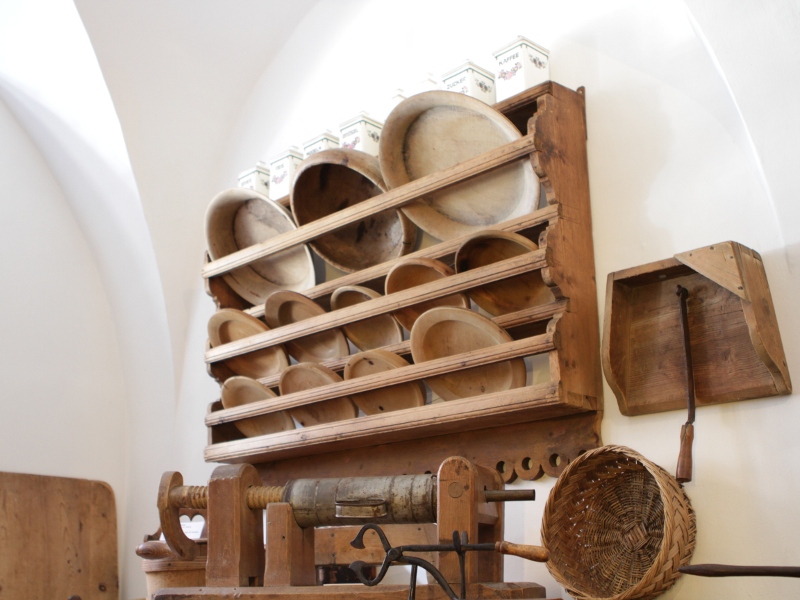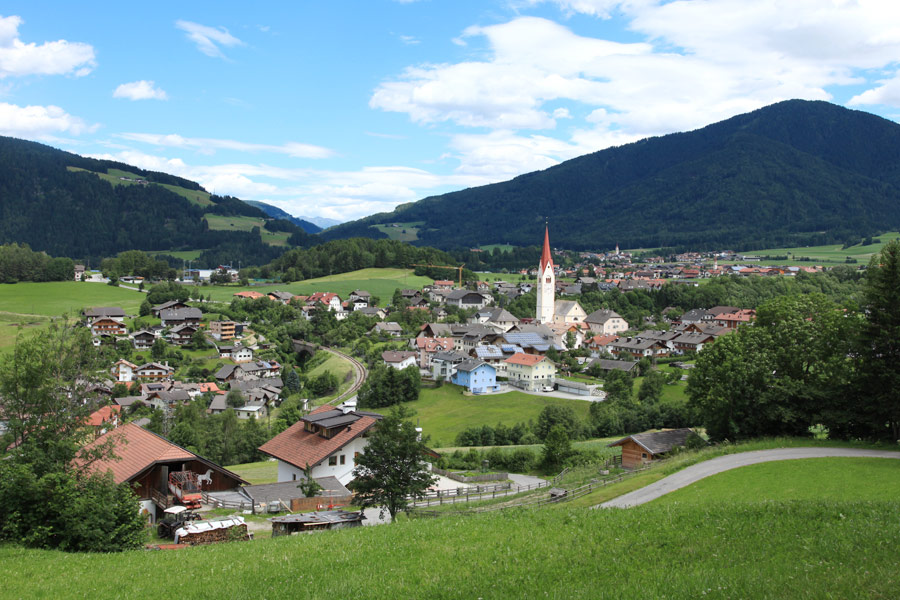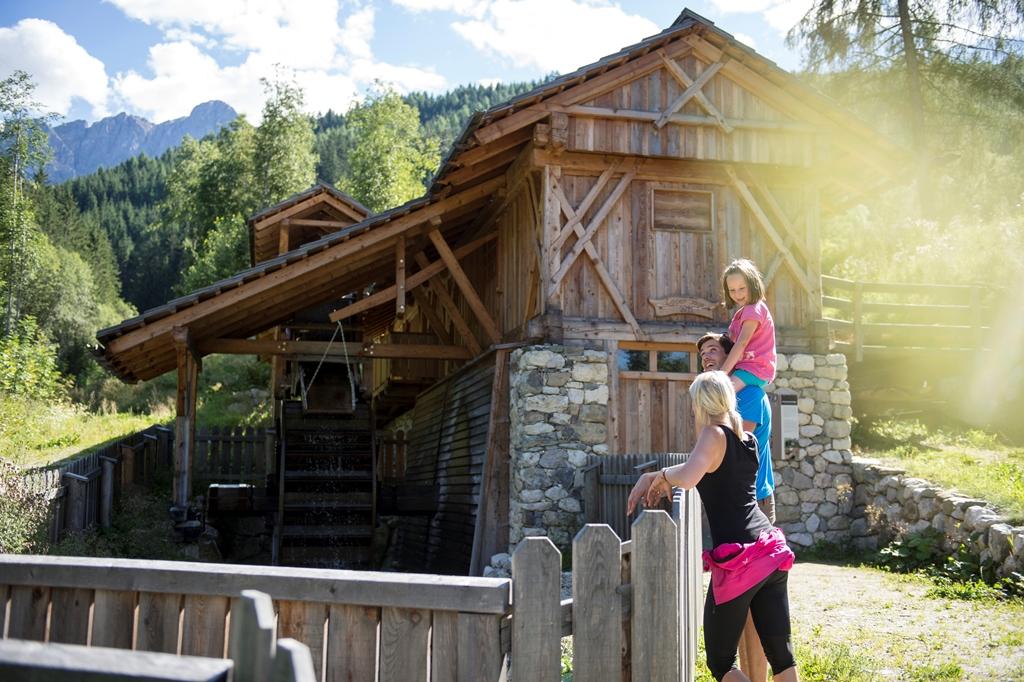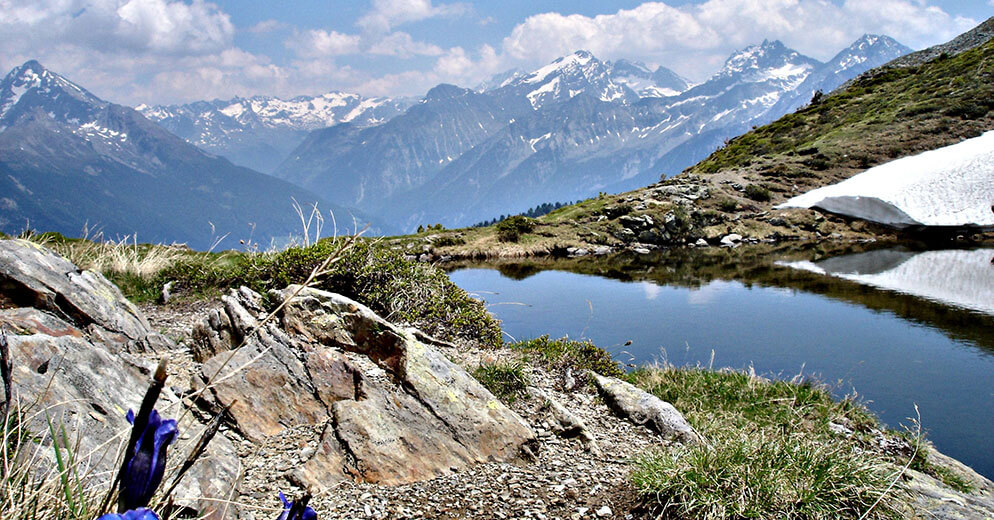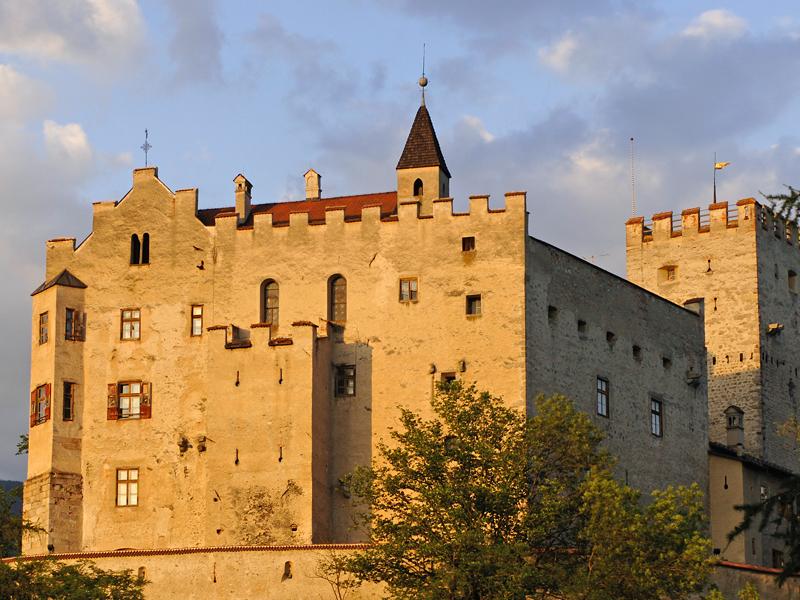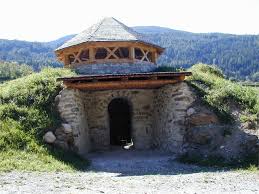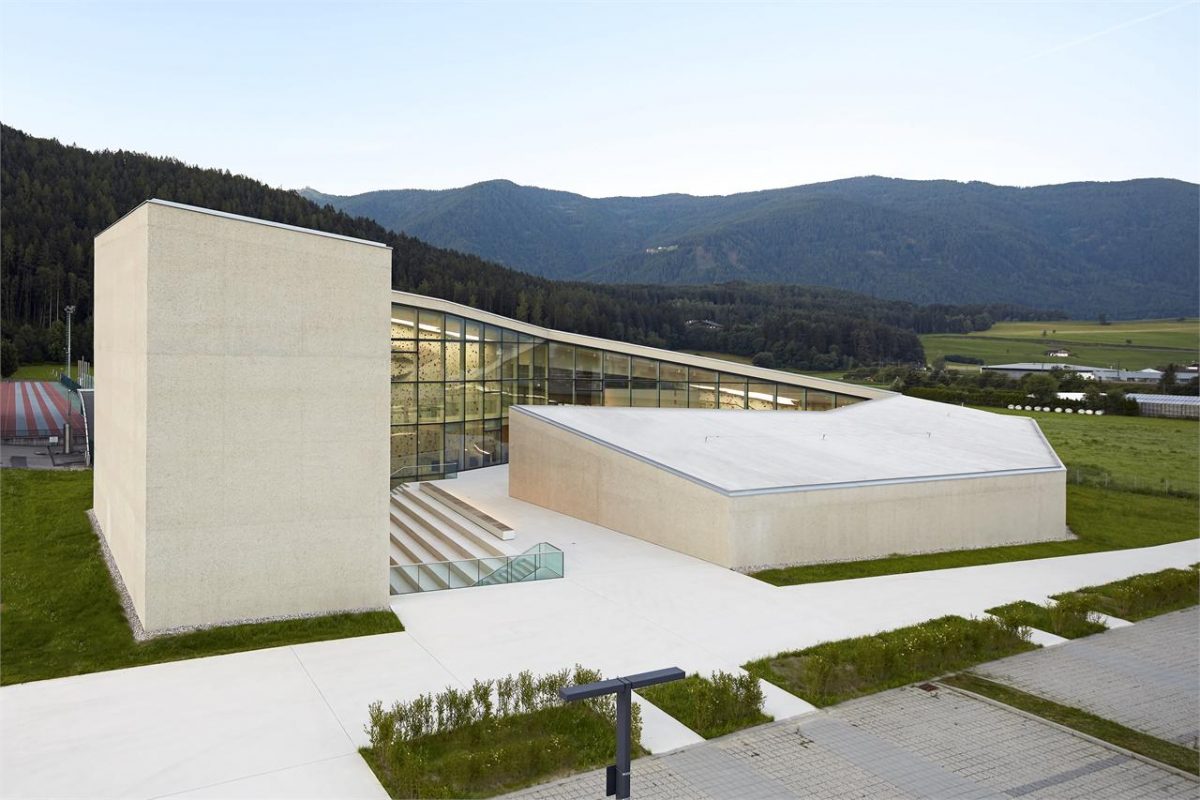How to reach Olang
Attractions:
– Limeklin Untermühlbach | Olang
– The Plague Wayside Shrine | Olang
– Sawmill Lipper | Olang
– Military Stone of the Romans | Olang
Experience:
– KronAir | Valdaora
Culture & Tradition in Valdaora
“The innkeeper from Olang, he was a brave son, the French are looking for him, to the mountains he did run.” That is the translation of the memorial plaque at the Baumgartner Stöckl chapel. It honors Peter Sigmayr, the freedom fighter. Carved into sandstone, it stands solidly today, courageously looking over the land, just as it always has.
In Valdaora-Olang, heroes are still honored today and religious customs are taken seriously. In the end, they are the occasion for colorful festivals and processions, such as the procession for the Sacred Heart of Jesus and the Corpus Christi procession each June, the Harvest Festival, or the Easter Festival.
The Kirchta (church festival) is a particular highlight, and since the community of Valdaora is divided into four districts, each of course with its own church with its own patron saint, the Church Festival Michael mannequin is put up on his perch four times a year. The video shows the stately procession at the church festival of Valdaora di Sotto.
Things are also festive at the return of the livestock. If the Alpine dairymen had a good year, and if the livestock had no misfortunes, then the cows are artistically decorated and driven back down into the valley. Yes, in Valdaora, traditions always have something colorful and merry about them.
